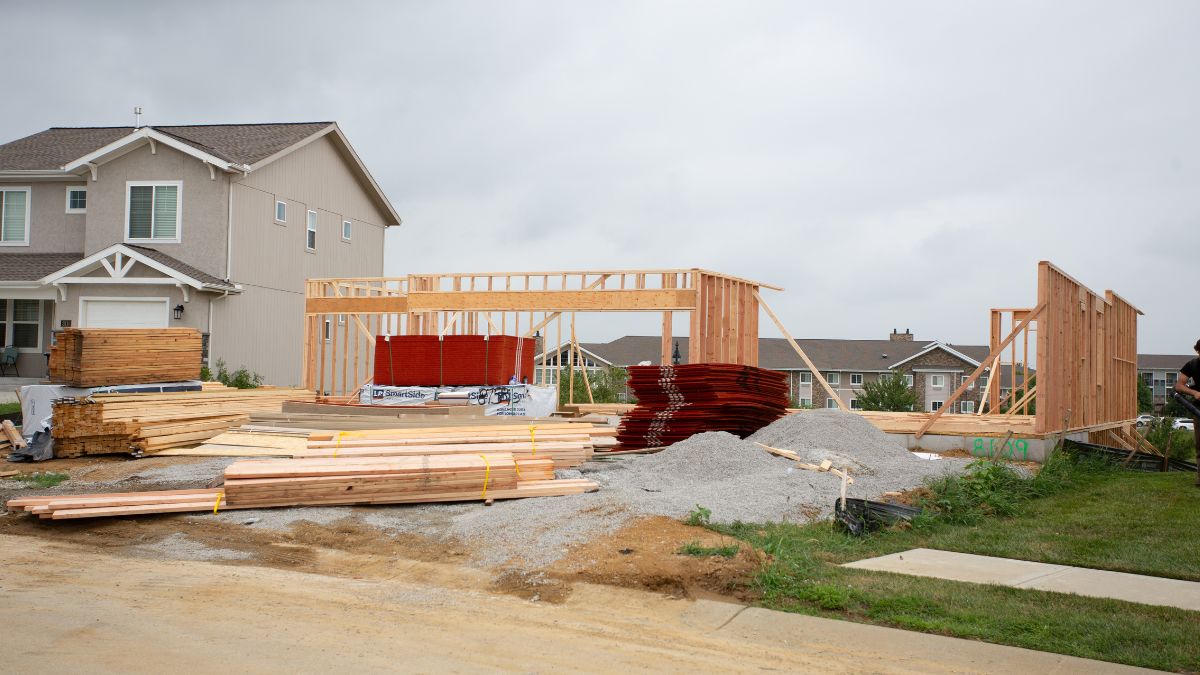8:41
News Story
How green technology is reshaping what buyers expect from Kansas City’s housing market
Kansas City’s green building market is evolving, with high-end homes featuring expensive energy solutions and first-time buyers opting for standard green upgrades
Twenty years ago, only the most environmentally minded of homebuyers worried much about solar panels, insulation ratings or the value of a heat pump.
Today, all those factors matter in a market where energy bills take on growing importance in homebuyers’ calculations.
Green home technologies have become more ordinary, even expected (and sometimes mandated by local building codes).
And the planet-friendly standards pioneered a few decades ago have been boosted by improving technologies — though the most dazzling ways to save energy and use more environmentally friendly materials tend to require buyers with beefier budgets.
The cheapest way to make a house greener is to keep it smaller. But other details matter.
Higher-rated insulation and electric appliances have become the standard. Meanwhile, amenities like conventional heat pumps and electric water heaters are becoming more popular among small-budget, first-time buyers. Solar panels and pricier geothermal heat pumps, meanwhile, are gaining popularity in the luxury home market.
“There’s been a lot of progress on this trend towards efficiency and electrification,” said Andrew Rumbach, a senior fellow at the Urban Institute. “That’s really taken off in the last five years because a lot of people are interested in using less fossil fuels and less energy.”
The shift toward greener homes comes partly because local and federal governments encourage it with a range of subsidies.
Evergy, for instance, gives its electricity customers rebates for heat pumps and at-home electric vehicle chargers.
And the Inflation Reduction Act of 2022 (which imposed more rules around fighting climate change) offers tax credits covering up to 30% of the costs for eligible clean energy home improvements like solar panels and solar water heaters installed by 2032.
What’s hot in green tech in Kansas City?
While luxury homes may feature high-end natural materials, the real driving force in today’s green construction is the demand for designs that guarantee lasting energy savings.
“There’s an aesthetic right now that’s very natural,” said Rumbach. “But that’s not the main mover of the market. A lot of these basic things, like the heating, cooling, and roofing materials, are.”
Homebuilders say that as technology advances and energy standards grow stronger, all types of buyers expect better-weatherized homes with high-insulation walls, upgraded heating and cooling systems and tight seals around windows and doors.
“Homeowners have become more aware of how extreme the weather gets here,” said Luke Owen, owner of Owen Homes. His construction company builds homes certified in Leadership in Energy and Environmental Design, or LEED. “We have to consider all the different weather events that are going to occur on the house and try to make sure our exterior surfaces are built for this.”
Rumbach said that energy-efficient furnaces have made huge strides in popularity. About two decades ago, most furnaces ran around 80% efficient — meaning you’d get 80% of the energy back as heat — but today’s models typically achieve between 90% and 99% efficiency, he said.
Green experts also say that electronic appliances are the standard in new home construction as buyers look to move away from fossil fuels like natural gas.
Rumbach said electric water heaters have become popular and more people are buying tankless, on-demand water heaters with federal incentives.
Bill Griffith, a member of Kansas City’s Climate Protection Steering Committee, said that he’s noticed a shift from electric stovetops to induction stovetops. Those save on electricity by using electromagnetic fields to heat pots and pans directly instead of the entire cooking surface.
But the most notable shift he’s noticed is in the popularity of heat pumps, which heat and cool air more efficiently by transferring outdoor heat inside during winter and expelling indoor heat outside during summer.
Griffith said that seven years ago, heat pumps struggled to heat homes when temperatures dropped to 35 degrees. However, the technology has improved significantly. In March 2022, he replaced his gas furnace and air conditioner with an electric furnace and a heat pump. He said he was pleasantly surprised to find that the heat pump heated his home without needing backup from the furnace, except for two extremely cold days in December.
“It still worked the second day at five (degrees) below zero before it kicked over to the backup,” he said.
And heat pumps cost only marginally more than air conditioners and bring energy savings, Griffith said. He paid $6,500 for his heat pump and an air conditioner would have cost him $5,700. He said that current homebuyers can see added upfront savings with a $2,000 federal tax credit for heat pumps.
“Most of my … savings come from the utility bill going down each month,” he said.
Heat pumps have risen in popularity so much so that Owen Homes typically includes them in its homes instead of air conditioners. They beat out gas-powered furnaces in total units sold in the U.S. last year.
But several advancements in green building lie beyond the budgets for first-time homebuyers. Owen Homes builds houses in the $1 million to $3 million range with pricier tinted and tighter-sealing windows.
“Our window packages typically range from $40,000 to $60,000,” he said. “A normal entry-level home is probably in a $7,000 to $10,000 package.”
Other technologies, like roof-mounted solar panels and geothermal heat pumps, are rising in popularity in the luxury market.
Geothermal heat pump systems make heating and cooling more efficient by running pipes underground to exploit the constant temperature.
And Kansas City’s current energy code requires that certain new homes be designed with roofs prepped for potential solar panel installations.
Owen said that everyone wants to build green until they see the upfront price and how long it takes to make your money back in energy savings. He said first-time homebuyers might need to think smaller.
“It’s about understanding the trade-off between the size of the home and the amenities,” he said. “You can either have a larger home with fewer upgrades or a smaller home with more.”
Are green homes expensive?
The Home Builders Association of Greater Kansas City estimates that adhering to the city’s current building code can add up to $31,000 to the price of a 2,400-square-foot, two-story home. However, the U.S. Department of Housing and Urban Development reports that the 2021 International Energy Code, the basis for the city’s standards, typically increases the cost of a single-family home by around $7,200.
Travis Brungardt, co-owner of Catalyst Construction, said that one of the biggest challenges to affordability is the shortage of trained workers who know how to install new, advanced systems. That lack of expertise means that installation and maintenance are more time-consuming and costly.
“It’s simple math for a tradesperson to choose between installing a system that they’ve installed 25 times and slowing down to learn a new system,” he said. “They will choose to take the easy work and make more money.”
Homeowners also have to learn to use the emerging technologies. For instance, Owen said, they have to know how to tweak humidity and ventilation settings on energy recovery ventilators, which exchange stale indoor air with fresh outdoor air, or they risk overworking the system during extreme weather.
“We’re pumping fresh air into the homes,” he said, “but the outdoor air could be 100 degrees or negative 10 degrees.”
Green technologies can also be costly to repair. Fixing a geothermal heat pump system can sometimes mean digging underground to access the network of pipes. That’s labor-intensive and expensive.
“It’s a lot more of a technical piece of equipment,” Owen said. “I’ve had several homeowners who have gotten extremely good benefits from them, like lower utility bills. But I’ve had some that had issues with their electronic system. It depends on what brand we go with or where it was produced.”
Brungardt said that Catalyst Construction built a 5,000-square-foot green home two years ago and its occupants have never paid more than $34 a month for electricity.
“I paid $260 last month for air conditioning and I live in a home half that size,” he said.
Catalyst Construction builds $700,000 to $2 million homes. Brungardt said that spending on any level of efficiency is worthwhile.
“There are things that you can’t put a price on,” he said, “like indoor air quality and human health.”
This article first appeared on Beacon: Kansas City and is republished here under a Creative Commons license.![]()
Our stories may be republished online or in print under Creative Commons license CC BY-NC-ND 4.0. We ask that you edit only for style or to shorten, provide proper attribution and link to our website. AP and Getty images may not be republished. Please see our republishing guidelines for use of any other photos and graphics.





